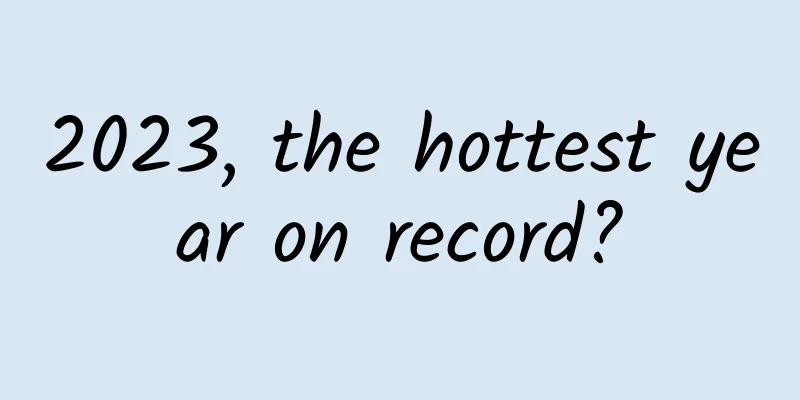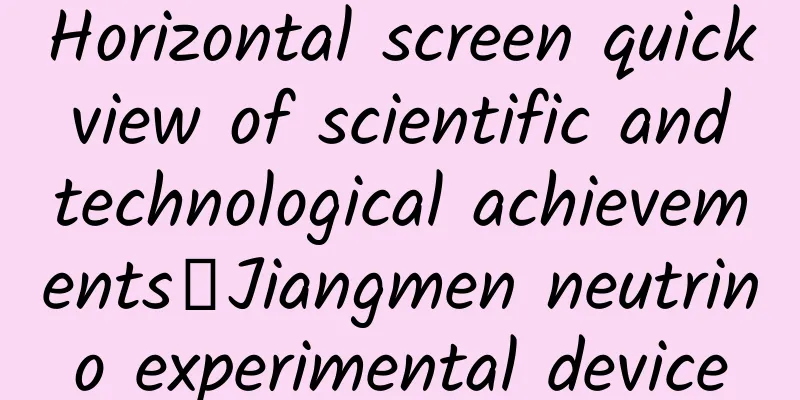DIKW Pyramid, which level has AI climbed to?

|
You may not have heard of the DIKW Pyramid, but you must have been rubbed on the contempt chain of this tower. A game anchor once described his prediction: the audience only saw the second layer and thought of the first layer, but I was actually at the fifth layer. Therefore, netizens described some unexpected operations as "this wave, this wave is in the atmosphere". Although this statement is a bit humorous, it does make some scientific sense. The DIKW pyramid is a hierarchical structure of human understanding, reasoning, and interpretation, namely: data (a raw set of facts), information (structured data that can be analyzed and measured), knowledge (learning requires insight and understanding), and wisdom (guiding action). The person standing at the top of the DIKW pyramid is equivalent to a top player who has passed all the levels. He has mastered the data, organized it into information, understood it as knowledge, and transformed it into wisdom, so that he can act with divine help. As resourceful as Zhuge Liang, he can use all kinds of tricks at will, and he is definitely a "man standing in the atmosphere". Does the DIKW pyramid apply to humans, but also to AI? The answer is yes. If AI also has a chain of contempt, then data-based AI will definitely be crushed by knowledge-based AI. This is because AI Is A Knowledge Technology, AI is a technology driven by knowledge. Therefore, the process of developing from primary artificial intelligence to advanced artificial intelligence and general artificial intelligence is also a process of climbing the DIKW pyramid. In recent years, many academic and industrial forces in the field of AI have moved from brute force computing that emphasizes "data creates miracles" to higher levels of the "knowledge pyramid", promoting knowledge computing to lead the future trend of AI applications. It can be said that we are at a critical stage of transition to knowledge-based AI. AI has already affected every aspect of our lives, so it is necessary to talk about what changes will AI bring as it climbs up the DIKW pyramid? The Pendulum Returns: The Renaissance of Rationalism Applying knowledge to machine intelligence is nothing new. As early as the last century, humans began to explore knowledge computing and widely applied it to work and life. From the moment AI was born, the two schools of thought, rationalism and empiricism, have been complementing each other. What they have in common is that they both believe that machine intelligence must first have knowledge, and knowledge is the core of intelligence; the difference lies in the different understandings and ways of acquiring knowledge. With the development of these two schools, the combination of knowledge and AI has manifested itself in two ways. One is a rationalist combination, where people provide knowledge and machines are responsible for calculations. Rationalism believes that human intelligence is innate and inherited. To realize machine intelligence, we must understand the operating mechanism of the human brain, summarize this knowledge, and then have people tell the machine what to do. A typical application is expert system. Human experts summarize knowledge, and computers learn based on the expert system knowledge base. This method is highly interpretable. Since the successful development of the world's first expert system, the chemical expert system DENDRAL in 1968, early expert systems that imitate experts in reasoning and analysis in a single field have become popular and widely used in many industrial computing scenarios such as industry, agriculture, medicine, meteorology, transportation, and military. However, expert machines can only be used in certain areas, and the construction cost is very high. Moreover, due to the upper limit of expert cognition, if humans cannot find the knowledge or express it, it is even more impossible for the machine to learn it. Therefore, from the 1990s to the present, another mode of combining AI and knowledge has become mainstream, that is, empiricism. A classifier is built manually by humans, and developers do not have to know the answer in advance. The machine does not rely on knowledge that cannot be described by human experts and can only be understood but not expressed in words. It can mine knowledge from data according to its own operating mechanism and train model parameters through large-scale data, thus demonstrating intelligence that exceeds that of humans. The most representative one is deep learning. Relying on powerful data, computing power and neural networks, Google Brain can convert data into knowledge through training without human help, without knowing the word "cat". After looking at millions of pictures, it can extract the basic characteristics of cats by itself, knowing that cats are furry (a bunch of adjectives omitted here) creatures, and then successfully identify cats in a pile of photos. Based on huge amounts of data, although AI does not really understand and master relevant knowledge, that is, "knowing what it is but not why it is", and cannot really replace human experts, it can decompose complex pattern recognition problems into simpler pattern recognition problems, and perform better and more efficiently than humans in some specific tasks, and has made great progress. Deep learning is also regarded as the peak of empiricism and has become the core of the third wave of AI. However, there is an essential difference between data-based AI and knowledge-based AI. The famous Moravec paradox has long pointed out this problem. Because machines cannot integrate implicit knowledge into thoughts and actions like humans to form high-level intelligence, they have become giants in logic and dwarfs in common sense. They can surpass humans in some difficult problems such as Go, but their performance in very simple cognitive problems is worse than that of four or five-year-old human children. One of the solutions is what rationalism advocates, which is to enable machines to understand knowledge and think like real humans. Just as Churchill predicted in A Pendulum Swung Too Far, AI has deviated too far from empiricism and will return to rationalism faster in the future. The pace of the revival of rationalism is coming. The call of the industry: the wave of digitalization and the light of knowledge Perhaps you think that empiricism and rationalism are just a dispute between schools of thought in academia and have nothing to do with ordinary people and the industrial world. In fact, in the wave of industrial intelligence, more and more industries and organizations are calling for knowledge-based AI. This is because: The model design phase requires knowledge-based understanding. We know that AI has begun to move out of laboratories and ivory towers, into thousands of industries, and has begun to integrate with the physical and biological worlds. However, the data in these fields is not entirely composed of 1s and 0s. For example, when AI predicts protein structure, each protein is not a simple image data, but has specific meanings behind it. How different molecules are related, how they interact with each other, and what principles they are combined together are supported by a whole set of biological logic and knowledge systems. If you lack knowledge of pharmaceutical science and use a purely data-driven approach to design a model, it is likely that the model you create will not be effective. Therefore, if we want AI models to truly play a role in industry, we must combine the mechanism models of actual work, expert knowledge, etc., and transform them into a mathematical language that AI can understand, process, and analyze. During the model training phase, knowledge-based data is required. In industrial AI, there is often a large amount of information in the data, that is, knowledge that is not or cannot be represented, which is often reflected in expert experience or master-apprentice inheritance. In order to train a better industrial model, not only a large amount of complete data is needed, but also the ability to accurately describe the knowledge relationship between the data, so that more useful knowledge can be mined from the data. Take the recommendation algorithms that we encounter in daily life as an example. Traditional recommendation algorithms recommend what users like, which can easily lead to information cocoons. However, a domestic research team combined the knowledge graph of food nutrition science with the recommendation algorithm, and combined health knowledge with user feedback data, such as click volume, interest preferences, physical data, etc., to make combinations and recommendations. Knowledge-based data can help create high-quality algorithms that better understand human nature. Take the recommendation system mentioned above. Compared with the algorithm that constantly caters to users, it provides an option that satisfies both taste preferences and health management requirements. Imagine if AI can combine the behavioral data of food delivery drivers with people's common sense knowledge, perhaps the dilemma of internal circulation caused by infinitely squeezing delivery time can also be solved. During the model implementation phase, trust based on knowledge is required. The practical application of AI models depends to a large extent on their reliability: First, credibility, whether the results are trusted by people. Deep learning is limited by the problem of explainability and is not as trusted as human experts in specialized fields such as medicine. Second, reliability, whether it can perform well even when interfered with, that is, solving the robustness problem. Professor Zhang Bei, an academician of the Chinese Academy of Sciences and dean of the Institute of Artificial Intelligence at Tsinghua University, once proposed that artificial intelligence for industrial application must meet five conditions: rich data or knowledge, complete information, deterministic information, static environment, specific field or single task. If any of these five conditions is not met, it will be very difficult for AI to be industrialized. One of the ideas to change the dilemma is knowledge computing, which enables AI systems to understand knowledge and learn common sense reasoning, making the model trustworthy and highly reliable. Previously, in order to improve the credibility and persuasiveness of search engine results, Google combined NLP with knowledge graphs for learning. If searchers find some articles mentioning "XX has worked in China", this information is integrated with the knowledge base to show that XX has worked for the China Trade Commission, which has an office in Beijing, then the credibility of "XX has worked in China" will be greatly improved. Similarly, if the autonomous driving system extracts and learns some travel common sense from large-scale text information, such as "a large truck blocks the view ahead, so you should be careful, as someone might suddenly come over and hit you", the understanding of common sense knowledge will undoubtedly greatly increase people's confidence in the safety of autonomous driving. The model application stage requires knowledge-based computing. A major bottleneck in the current industrial intelligence is the high cost of computing power. Large deep neural network systems require a lot of computing resources to handle complex tasks. A study from the University of Massachusetts shows that the training process of several common large-scale AI models will emit more than 626,000 pounds of carbon dioxide, which is almost five times the life cycle emissions of an ordinary car. To put it simply, humans are very energy-efficient when thinking (which is also a kind of knowledge calculation). Psychologist Kahneman proposed in "Thinking, Fast and Slow" that the human brain can either perform slower rational thinking through System 2, or use System 1, based on internalized knowledge, to achieve unconscious, fast calculations similar to muscle memory, and the brain consumes very little energy. In the future, creating knowledge-based AI models, just like activating brain areas, will become an important method of green computing to ensure the sustainable development of industrial intelligence. It is not difficult to find that the combination of industry knowledge and AI computing is not only an inevitable stage in the development of technology in theory, but also an indispensable step in the AIization of the industry in fact. As a practical technology, AI can only condense the long-term value of technology and drive the third wave of artificial intelligence forward if it truly accepts and integrates industry knowledge and transforms computing and knowledge into productivity in the new era. A difficult climb: How many steps are there from the data layer to the knowledge layer? Talking about the technology prospects without considering the application conditions is just empty talk. Knowledge-based AI also requires prerequisites. It needs to have at least the following characteristics: 1. Accuracy of knowledge representation. In order for AI to understand and use knowledge to solve complex real-world problems, it is first necessary to convert these contents into mathematical language and turn them into a data-based path that AI can solve. However, there are many types of knowledge that need to be represented in an AI system, and it is not easy to represent them comprehensively and accurately. Among them, there is declarative knowledge that is easy to represent, procedural knowledge about how to do something; there is also knowledge that is not easy to describe, such as heuristic knowledge summarized based on the experience of experts in a certain field, which may not be entirely correct; and structural knowledge that represents conceptual relationships, such as the interaction between molecules, which humans currently do not fully understand. The accuracy of knowledge representation will directly affect whether machines can be as intelligent as humans. 2. Diversity of knowledge reasoning. Reasoning ability is the biggest difference between humans and other species, especially creative thinking. The core ability of knowledge computing is reasoning ability, which generates corresponding new knowledge based on the existing representation structure and provides creative insights for the industry. It is entirely possible to imagine such a scenario: establishing a huge knowledge base that stores the knowledge needed by humans to complete various tasks. AI no longer needs to be specially trained for each specific scenario or specific data set. It can be like a truly intelligent human being, able to draw inferences from one instance to another, easily complete reasoning and analysis, and cope with various complex tasks in the real world. 3. Automation of knowledge acquisition. Building a common sense database is not an easy task, and it is also called the "Manhattan Project of AI." Especially with the massive amount of data brought about by the information explosion, machines are needed to take over the work of converting information into knowledge. To improve the efficiency of knowledge acquisition, automation has become a hard nut to crack. Using automated methods to acquire new knowledge can speed up the iteration of AI knowledge systems, realize automatic updating of models, and shorten the time to build industry knowledge graphs. 4. High efficiency in knowledge application. Different industries have different ways of knowledge accumulation, application, and management. It is not realistic for enterprises to build a set of personalized tools. Therefore, if knowledge computing is to be implemented in the industry, a series of standardized tools are needed to provide knowledge search, high-performance query, visual analysis and other functions to improve the efficiency of knowledge mining. As a newly emerging technology direction, it requires forward-looking platform-based technology companies and organizations to build infrastructure and open capability interfaces to various industries and enterprises. Data and information describe the world, while knowledge and wisdom understand the world. From this perspective, the higher the level of AI on the DIKW pyramid, the stronger its ability is, and the closer it is to strong artificial intelligence. This climbing road is not easy, but it is the only way to industrialize AI and industrialize AI. Finally, when AI reaches the top of the pyramid and acquires true wisdom, we will no longer be sure whether AI will be the smartest object on earth. In other words, are humans still at the highest level of wisdom? As Eliot wrote in his poem: "Where is the wisdom we have lost in knowledge? / Where is the knowledge we have lost in information?" Once upon a time, wisdom was something unique to humans, representing humans as the most intelligent creatures in the world. In the digital age, many people are acquiring less and less knowledge and actively thinking, and are increasingly immersed in a vast ocean of fragmented data and information. Perhaps, as we witness AI climbing to the top of the pyramid, it is more important to remain vigilant against humans sliding toward the bottom of the pyramid. |
<<: Why do fireflies glow? Do they also emit electromagnetic waves and photons?
>>: Meteor hammers, maces...how many other tricks can a dinosaur's tail have?
Recommend
How will China's robotics industry take the lead in the battle for discourse power under the market size of 600 billion yuan?
Artificial intelligence and the robotics industry ...
How to solve the user retention problem? These 3 dimensions can help you solve it
I heard that your APP has a large number of users...
Zhihu product operation analysis
From a vertical knowledge community loved by prof...
How much does it cost for a Lianyungang merchant to customize a mobile phone accessories mini app?
What is the price of Lianyungang mobile phone acc...
How to cultivate "user habits" like Didi: Every time you activate, your retention rate increases
For a good product, attracting users is only the ...
Where will the dispute between Zhu Jianghong and Dong Mingzhu lead Gree?
There are many good horses, but the competition b...
Is water spinach the "king of all poisons"? Is it true? Many people are still in the dark...
Healthy living is very important nowadays, and it...
Android watch high-definition Korean drama permanent membership version_Resource headlines
Login has been modified to show permanent members...
From the sudden popularity of faceu and same, let’s talk about how to make a fantastic “killer” APP!
" Faceu has already ranked first on the free...
How to create your own entry in Baidu Encyclopedia? Is there any method?
Baidu Encyclopedia started in 2006. When it was f...
Which cloud computing company is better? Amazon vs. Microsoft
Last week, Amazon and Microsoft released their qu...
Military Advisor's Mansion Yin Pan Qi Men Dun Jia Advanced Class 28 Lessons
Military Advisor's Mansion Yin Pan Qi Men Dun...
The latest Douyin enterprise account operation ideas in 2021
Can’t Tik Tok handle the traffic? Look here! 1. F...
What do you think if the next generation iPhone keeps the big bangs design?
At the beginning of last month, Apple officially ...
How much does it cost to customize the Bijie learning mini program? Bijie learning applet customization price inquiry
There is no fixed price for the customization of ...









